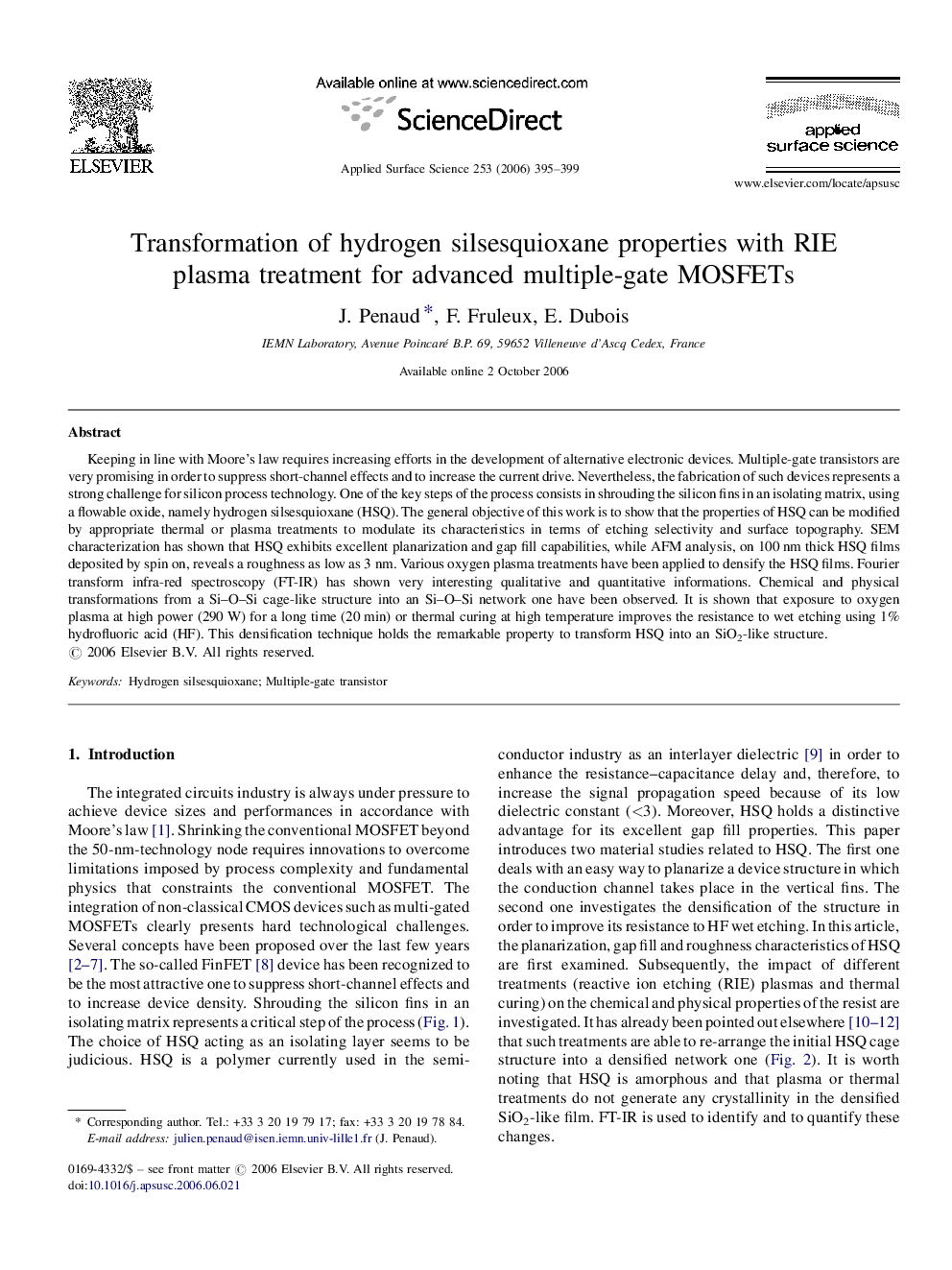| Article ID | Journal | Published Year | Pages | File Type |
|---|---|---|---|---|
| 5368590 | Applied Surface Science | 2006 | 5 Pages |
Keeping in line with Moore's law requires increasing efforts in the development of alternative electronic devices. Multiple-gate transistors are very promising in order to suppress short-channel effects and to increase the current drive. Nevertheless, the fabrication of such devices represents a strong challenge for silicon process technology. One of the key steps of the process consists in shrouding the silicon fins in an isolating matrix, using a flowable oxide, namely hydrogen silsesquioxane (HSQ). The general objective of this work is to show that the properties of HSQ can be modified by appropriate thermal or plasma treatments to modulate its characteristics in terms of etching selectivity and surface topography. SEM characterization has shown that HSQ exhibits excellent planarization and gap fill capabilities, while AFM analysis, on 100Â nm thick HSQ films deposited by spin on, reveals a roughness as low as 3Â nm. Various oxygen plasma treatments have been applied to densify the HSQ films. Fourier transform infra-red spectroscopy (FT-IR) has shown very interesting qualitative and quantitative informations. Chemical and physical transformations from a Si-O-Si cage-like structure into an Si-O-Si network one have been observed. It is shown that exposure to oxygen plasma at high power (290Â W) for a long time (20Â min) or thermal curing at high temperature improves the resistance to wet etching using 1% hydrofluoric acid (HF). This densification technique holds the remarkable property to transform HSQ into an SiO2-like structure.
